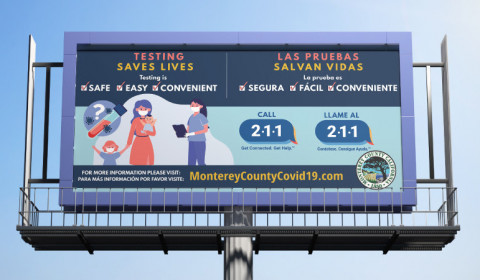Effective and good communication is at the heart of every sound leadership and management practice .
From establishing clear expectations, setting big picture goals, building company culture down to fostering accountability, communication is always at the core of effective leadership. Clearly messaged, trusted communication can either make or break our operations and enhance our employee engagement.
A study by The Economist Intelligence Unit indicates how poor workplace communication is detrimental to an organization. “Survey respondents say that communication barriers result in delay or failure to complete projects (44 percent), low morale (31 percent), missed performance goals (25 percent), and lost sales (18 percent).” This can be worse when a crisis such as the coronavirus pandemic or a natural disaster hits.
Communication clearly is crucial to an organization’s stability
Effective communication becomes even more critical during times of crisis and uncertainty.
Workforces globally are facing a massive challenge to their business operations with the COVID-19 pandemic. It has prompted businesses to take drastic measures to ensure the safety of staff and customers alike. (a shout out of appreciation to all those on the front lines.) Depending on the nature of the business, some have ceased operations or function under a skeleton workforce and limited hours, while other organizations have implemented work from home arrangements. While working from home may become more commonplace, it is not always optimal in building strong teams. This will have to be carefully looked at as we climb out of “shelter in place” orders.
Effective communication can really bind your team together.
Given the shifting workplace situation, effective workforce communications are more critical than ever. Any crisis, whether a natural disaster, a corporate meltdown or the outbreak of a disease affects employee morale. It can also affect the psychological health of individuals and teams. Effective communication can still bind your team together even during times of uncertainty. Leaders need to do their part to address issues promptly and clearly. Being remote adds a new level of complexity for leaders as there are going to be times when difficult news needs to be delivered and you may not be able to do that in person.
With an increasing dependency on social media and online platforms, this can turn employees into de facto spokespeople for your organization. Whatever they share on their platforms about working for your company will reflect how you communicate with them. Those communications — or lack of a clear, consistent message — can result in a better brand image or sprout into a new crisis. Use of social media in a period of social distancing needs to be discussed within teams.
So how can we as leaders effectively address our teams during a challenging time like we are in?
When a crisis strikes, it’s essential to address employees, customers, vendors and stakeholders as soon as possible and to be as transparent as possible.
As leaders you may not have answers to some of the questions you will get right away. In the case of rapidly developing situations, like the COVID-19 pandemic, this is understandable. But it’s crucial to let all stakeholders know that you are looking into the issue and finding solutions to their concerns. What matters is to give them the assurance that you and the organization is aware of the situation and that their welfare is a priority.
Solidifying your message is key. While different roles have different concerns, it’s essential to keep the overall message continuous and consistent.
Address all of the concerns and frequently asked questions. In the case of the COVID-19 pandemic, some of the questions will revolve around remote work, schedule changes, payment arrangements, leave management and other operational issues. Baring in mind that company policies are still in full force whether someone works from home or in the office.
Diversifying message delivery is equally important as how it is crafted. Empathy is important during a crisis, but what if face-to-face communication is no longer possible?
“Video conferencing or a recorded video message are viable options, but how do you let staff know about it? Email is a common communication channel for organizations, but it’s best to diversify delivery channels when the situation is urgent,” say Workforce.com. In a 2019 survey by text-messaging platform SlickText of over 1,000 employees across the United States, 43 percent of respondents say that timely notifications and emergency alerts are best sent through SMS and not email. According to Workforce.com, “Chat platforms also are useful in this case as they can quickly disseminate information and concisely. Employees are likely to open chat platforms frequently, too.”
Remember communication is a dialogue not a monologue.
Effective communication to employees, clients, vendors, and stakeholders goes beyond issuing announcements or bulletins. It’s about keeping communication lines open and asking for feedback. This is something I put in place long before this pandemic and is greatly appreciated by 90% of my team.
During a crisis, it’s imperative to open additional channels for discussions and to raise questions. Chat applications are suitable not just for discussing in groups but in one-on-one correspondence as well. It’s more immediate than email too and helps pass information more quickly. Of course let’s not forget the good old telephone. As the old AT&T or MaBell used to say; “Reach out and touch someone.” (Ha Ha, they meant with the telephone for those of you thinking otherwise.
A good communication process is critical for any organization. It’s important to equip a workforce with different and creative ways to stay connected. If you would like to share your ideas, drop me a note or comment on my TMD Blog. As always, stay safe, stay healthy, stay home. Let’s beat COVID-19 together.



